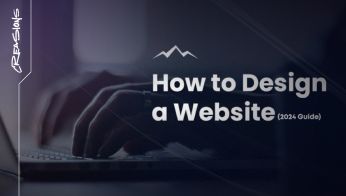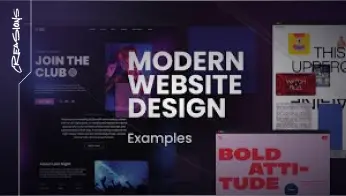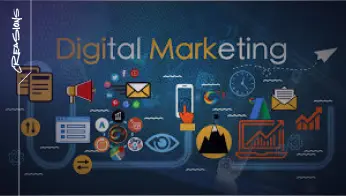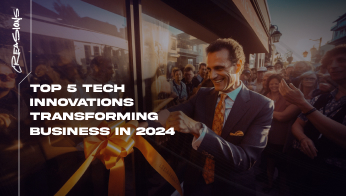Designing a website is more important than ever in 2024. With an increasing number of businesses moving online and more users accessing the web via multiple devices, having a well-designed website is crucial. A good website doesn’t just look appealing; it also offers a seamless user experience (UX), loads quickly, is accessible, and is optimized for search engines (SEO). In this guide, we’ll walk you through the step-by-step process of designing a website in 2024, from planning to launch.
Step 1: Define Your Website’s Purpose and Goals
Before you start designing, it’s essential to understand the purpose of your website. Are you creating a personal blog, a portfolio, an e-commerce site, or a business website? Defining your goals will guide the design process and ensure that every element on your site serves a specific purpose.
Identify Your AudienceWho are you designing the website for? Understanding your target audience will help tailor the design to meet their needs and preferences.
Set Clear Objectives: What do you want to achieve with your website? Whether it’s increasing sales, generating leads, or building brand awareness, having clear objectives will keep the design focused.
Step 2: Research and Plan Your Website
Research is a crucial step in the web design process. Look at competitors’ websites to understand industry standards and identify opportunities to differentiate your site. Create a plan that outlines the structure and content of your website.
Create a SitemapA sitemap is a visual representation of the website’s structure. It outlines the main pages and subpages, helping you organize content and ensure smooth navigation.
User Journey MappingConsider how users will navigate your site. User journey mapping involves plotting out the steps a visitor takes to accomplish a task, such as making a purchase or signing up for a newsletter.
Step 3: Choose the Right Platform
Selecting the right platform for your website is critical. Your choice will depend on your technical skills, budget, and the functionality you need.
Content Management Systems (CMS)Platforms like WordPress, Joomla, and Drupal offer flexibility and are ideal for most websites. WordPress, for example, powers over 40% of websites on the internet due to its ease of use and vast library of plugins and themes.
Website BuildersFor beginners or those needing a website quickly, website builders like Wix, Squarespace, and Weebly are great options. They offer drag-and-drop functionality and come with pre-designed templates, reducing the need for coding knowledge.
E-commerce PlatformsIf you’re creating an online store, consider platforms like Shopify, BigCommerce, or WooCommerce (a WordPress plugin). These platforms offer specific features for managing products, inventory, and payments.
Step 4: Focus on User Experience (UX) Design
User experience is at the heart of web design. A website that is easy to use, intuitive, and meets the needs of its visitors will perform better than one that is confusing or difficult to navigate.
Simplicity and ClarityKeep the design clean and straightforward. Avoid cluttering the page with unnecessary elements that might distract users from the primary action you want them to take.
Responsive DesignEnsure your website is mobile-friendly. With more people using mobile devices to access the internet, a responsive design that adapts to various screen sizes is essential.
Fast Loading TimesUsers expect websites to load quickly. Optimize images, leverage browser caching, and minimize the use of heavy scripts to improve loading speeds.
Step 5: Design the Visual Elements
Visual design is about more than just aesthetics. It’s about creating a cohesive brand experience that resonates with your audience.
Choose a Color SchemeSelect colors that reflect your brand and evoke the right emotions. Use tools like Adobe Color to create a palette that works well together.
TypographyChoose fonts that are easy to read and align with your brand’s tone. Stick to a maximum of two to three fonts throughout your website to maintain consistency.
Imagery and Graphics Use high-quality images and graphics that enhance the content and overall aesthetic of your site. Be mindful of image sizes to ensure they don’t slow down your site.
Step 6: Develop the Website
Once you have a clear plan and design in place, it’s time to start developing the website. This involves coding and integrating all the elements you’ve designed.
HTML/CSSHTML is used to structure the content, while CSS styles the content. Learn the basics of HTML and CSS to have better control over your website’s appearance and functionality.
JavaScriptFor added interactivity and dynamic content, JavaScript is the go-to scripting language. Use JavaScript to create features like image sliders, form validations, and interactive maps.
Content Management SystemsIf you’re using a CMS like WordPress, you can leverage themes and plugins to add functionality without coding from scratch.
Step 7: Optimize for SEO
Search engine optimization (SEO) is essential for making your website discoverable by search engines like Google. A well-optimized website attracts more organic traffic and ranks higher in search results.
Keyword ResearchIdentify relevant keywords for your content that align with what your audience is searching for. Use tools like Google Keyword Planner or Ahrefs to find keywords with high search volume and low competition.
Meta Tags and Descriptions Write compelling meta titles and descriptions for each page. These elements help search engines understand your content and improve click-through rates from search results.
Alt Text for ImagesInclude descriptive alt text for images to improve accessibility and help search engines index your images properly.
Optimize for SpeedPage speed is a ranking factor. Compress images, enable browser caching, and use a content delivery network (CDN) to improve site speed.
Step 8: Test and Launch
Before launching your website, thoroughly test it to ensure everything works correctly and provides a positive user experience.
Cross-Browser CompatibilityTest your website on different browsers (Chrome, Firefox, Safari, Edge) to ensure it displays and functions correctly across all platforms.
Device Responsiveness Test the site on various devices (desktops, tablets, smartphones) to ensure it is fully responsive.
Functionality TestingCheck all links, forms, and interactive elements to make sure they are working as expected. Test load times and fix any broken elements.
Step 9: Launch Your Website
Once you’ve tested everything and are satisfied with the results, it’s time to launch your website. Inform your audience through your social media channels, email newsletters, and other marketing efforts. Monitor the site’s performance and user feedback closely after the launch to make any necessary adjustments.
Step 10: Maintain and Update Your Website
Website design is not a one-time task. Regular maintenance and updates are necessary to keep your site running smoothly and relevant.
Content UpdatesRegularly update your content to keep it fresh and engaging. This can improve SEO and provide value to returning visitors.
Security UpdatesKeep your website secure by regularly updating your CMS, plugins, and other software. Use strong passwords and consider adding security plugins or services.
Monitor Analytics Use tools like Google Analytics to track your website’s performance. Analyzing data on user behavior, traffic sources, and conversion rates can help you make informed decisions about future updates.
Wide-Up:
Designing a website in 2024 requires a balance of creativity, technical skill, and strategic planning. By following these steps, you can create a website that is not only visually appealing but also user-friendly, responsive, and optimized for search engines. Whether you’re designing a personal blog, a business site, or an online store, a well-designed website will help you achieve your goals and provide a valuable experience for your visitors.
Start your web design journey today, and build a site that stands out in the digital landscape.









